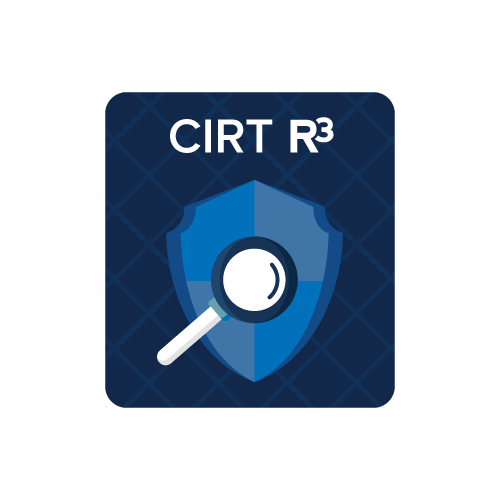Critical Incident Response Team
Our critical incident response team will help you investigate your organization’s alarms and suspicious activity, find the source of the compromise, and follow the chain of events until resolution.

Connect with a member of the R3 sales team today



What is a cyber security Incident Response Plan?
An incident response plan determines how an organization will handle a security incident, including defining the roles and responsibilities of the incident response team, outlining the steps and procedures to follow, and laying out the tools and resources to use. The main goal of an incident response plan is to contain, investigate, and remediate the incident, restore normal operations, and prevent future incidents.
The R3 Incident Response Framework
1
Preparation and Planning
2
Early Detection and Identification
3
Implement a Containment Strategy
4
Forensic Analysis
5
Follow Communication and Documentation Protocols
6
Continuous Improvement
Benefits of having a Cyber security Incident Response Team
Having a dedicated Cybersecurity Incident Response Team (CIRT) provides several benefits for organizations:
Rapid Incident Response
A dedicated CIRT is trained to respond quickly and effectively to cybersecurity incidents. Their expertise enables them to promptly identify, contain, and mitigate the impact of security breaches, reducing the time it takes to recover from an incident.
Reduced Downtime and Financial Impact
Swift and efficient incident response helps minimize downtime and financial losses associated with cyber attacks. The CIRT’s ability to contain and eradicate threats promptly can prevent further damage, ensuring business continuity and limiting the impact on the organization’s bottom line.
Enhanced Preparedness and Planning
The CIRT plays a central role in developing and testing incident response plans. Their involvement ensures that the organization is well-prepared to handle various types of cyber threats. Regular training exercises and simulations help refine response strategies and improve overall readiness.
Expertise in Forensic Analysis
CIRT members possess specialized skills in digital forensics, allowing them to conduct thorough investigations into the causes and scope of security incidents. This forensic analysis not only aids in the immediate response but also provides valuable insights for strengthening preventive measures and security controls.
Improved Coordination and Communication
A well-structured CIRT fosters efficient communication and coordination during incidents. The team acts as a central hub for information sharing among internal departments, external partners, and relevant stakeholders. Clear communication helps streamline the response effort and ensures that everyone is informed about the incident’s status and resolution.

Talk to a member of our team to learn more

Download The Ultimate Guide to MSPs
Check out our free eBook The Ultimate Guide to Managed Service Providers (MSPs) today.
Trusted by 1000+ customers
“We went out to find a managed services provider, and with R3 it’s become more of a partnership. They have the best intentions for KDB and want KDB to succeed. It’s been more than we asked for when we started the process.”

“An outstanding example of the level of detail and clarity for all R3 projects. The team made incredible progress on this critical project and most importantly - they completed it on-time.”

“R3's ability to manage large and complex projects is easily a 10/10. And in regard to their experience and technical ability to keep our systems protected, we have been very satisfied. We see R3 as a partner and we trust them.”

“Whether doing business over the phone, via email, or in-person, it’s always the same, excellent customer service. As someone who has been in the customer service industry since the early 80’s, I appreciate when businesses own and recognize that their level of service will determine their success.”

“We have someone who we trust and believe in when we call with a problem. To call an have someone who just talks to us a like a person. R3 follows through with everything they say they're going to do.”

“The flexibility of the R3 team was integral to the success of this move. As unforeseen challenges popped up throughout the project our business faced no interruptions to daily operations thanks to the ingenuity and experience of the R3 team.”

